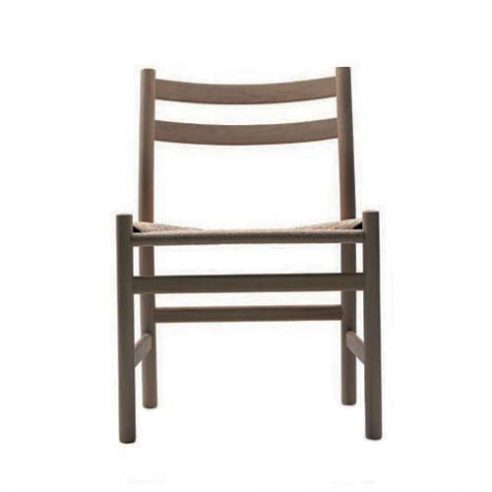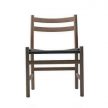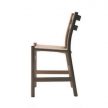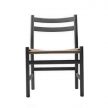Dining Chair

CH47
In the early 1960s when many furniture designers such as Charles and Ray Eames Danish Verner Panton, Finnish-American Eero Saarinen and the Frenchman, Pierre Paulin, were experimenting with new materials like, aluminium, fibreglass, plastic and rubber, Wegner chose to go in a different direction altogether.
The same ascetic expression found in CH37 and CH44 easy chair is also evident in CH47 and its companion armchair CH46. Unlike CH36, CH47 is sturdier in appearance yet it is clearly influenced by the Shaker chairs, and has the same characteristic rails in the back.
Ref: Hans J. Wegner. A Nordic Design Icon from Tønder. Edited by Anne Blond.
While he was no doubt interested in these new materials and would probably have liked to investigate their possibilities more than he did, one of the reasons he didn’t was because he felt obliged to create new furniture designs each year for the marketing organization, Salesco which only marketed and sold Wegner’s furniture. In other words, he was needed elsewhere and there one
worked in wood.
The arm chair CH46 is a companion to model CH47. These two chairs were part of a long series of Shaker inspired chairs that Wegner designed for Carl Hansen & Son throughout the 1960s. The Shaker, a religious sect in the United States, comprising of northern European immigrants had since the beginning of the 19th century have lived in small communities.
Isolated from external influences the sect fostered a tradition of artisanship. Its members believed that the spiritual and temporal worlds meet in the things they build and surround themselves with. Therefore an object’s exterior must be modified as little as possible and be pure, unadorned and robust. It is for this same reason that an object’s function completely dictates its form. According to Shaker aesthetics, beauty is expressed in functionality.
Wegner particularly found inspiration in the archetypal Shaker chair that consists of a slender – but strong – wooden frame with straight angles, a woven seat that is penetrated by the legs in the two front corners, and three or four wide transverse rails in the back.





